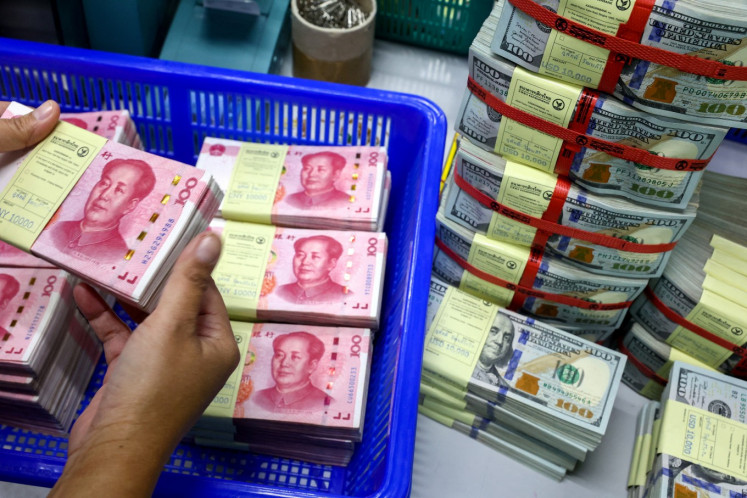Popular Reads
Top Results
Can't find what you're looking for?
View all search resultsPopular Reads
Top Results
Can't find what you're looking for?
View all search resultsQRIS as the future of financial transactions
Data from the Indonesian Payment System Association (ASPI) note that throughout 2022, the accumulated volume of QRIS transactions nationally reached 1 billion transactions with a transaction value of Rp 99.98 trillion ($6.4 billion).
Change text size
Gift Premium Articles
to Anyone
I
ndonesia has huge potential in the digital economy. According to e-Conomy data, the digital economy in Indonesia is expected to reach US$130 billion by 2025. It is estimated that the digital economy in Indonesia will reach $77 billion by 2022, with e-commerce driving growth to $59 billion. Over the past five years, the e-commerce industry in Indonesia has witnessed double-digit growth. Estimates suggest that the compound annual growth rate (CAGR) will climb to 13.5 percent by 2024. With consumers' increasing confidence in online shopping, e-commerce is expected to rise significantly in the coming years. As businesses move toward online platforms, online spending is also predicted to increase as an alternative to traditional retail shopping.
The key to the rapidly growing digital economy is internet adoption. Based on Statistics Indonesia’s National Socioeconomic Survey (Susenas) data in 2022, some 63 percent of Indonesia's total population is connected to the internet. The high internet penetration in Indonesia is a catalyst for the digital economy. Penetration among rural residents has also reached more than 50 percent. Meanwhile, by the age group, Gen-Z is the most tech-savvy generation at 87 percent. Followed by Gen-Y (79 percent), Gen-X (49 percent) and the Alpha generation (32 percent). Perhaps it is no surprise that there is no significant difference between men and women in regard to internet access.
The pandemic also contributed to the growth of the digital economy. As we have seen, the pandemic shifted us from conventional to digital transactions. A study by McKinsey stated that when compared with before the pandemic (2015-2019), in 2020 e-commerce within retail sales grew threefold. Digital transactions have become increasingly popular through e-wallets. The 2022 InsightAsia survey (with a total of 1,300 respondents) noted that e-wallets took up the largest portion of payments, namely 71 percent of total respondents. Followed by cash (49 percent), transfer (24 percent), QRIS (21 percent) and pay-later (18 percent).
In the context of digital transactions, the government’s initiative in the Indonesian Standard Quick Response Code (QRIS) has accelerated digital transactions. Part of the reason is that QRIS has improved interoperability in which merchants now need only a single QR code rather than multiple provider-based QR codes. Combined with rapid digital transformation in financial institutions, the widespread use of mobile phones has helped QRIS become the perfect stepping stone to ditching cash. This is happening in big cities such as Makassar and other cities in South Sulawesi.
Since QRIS was launched in August 2019, national transactions have increased threefold. Data from the Indonesian Payment System Association (ASPI) note that throughout 2022, the accumulated volume of QRIS transactions nationally reached 1 billion transactions with a transaction value of Rp 99.98 trillion ($6.4 billion).
Bank Indonesia (BI) noted that in July 2023, the total number of QRIS users amounted to 38.24 million. Of this 72 percent, namely 27.51 million users, were merchants, the majority of whom were micro, small and medium enterprises (MSMEs). Of the total transactions, 77 percent of QRIS transactions were below Rp 100,000. This proves that QRIS can currently be used in the micro-segment. The QRIS transaction value in July 2023 amounted to Rp 18 trillion, an increase of 84.5 percent (yoy). The QRIS user target for 2023 is 45 million users.
Our own Mandiri Spending Index (MSI) data also suggests that the trend of payment transactions using QRIS and mobile banking (only payment transactions, excluding transfers and top-ups) continues to increase. The proportion of payments using debit and credit cards will continue to decline in 2023, while mobile banking and QRIS will continue to increase.



















